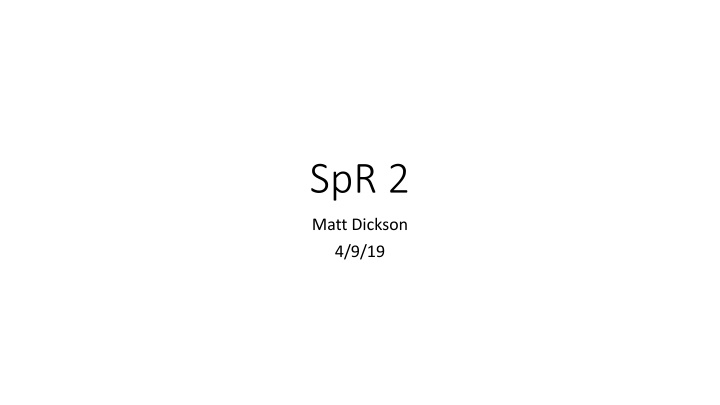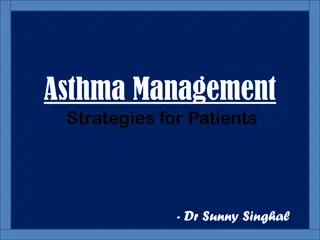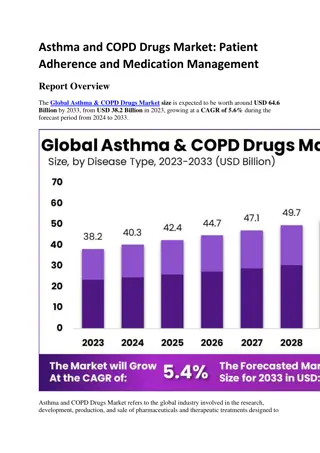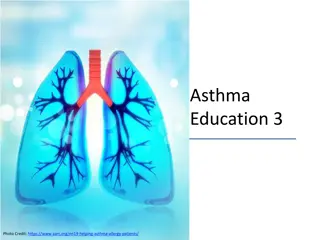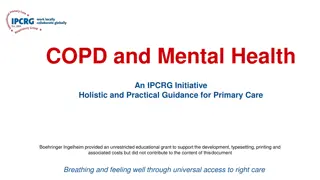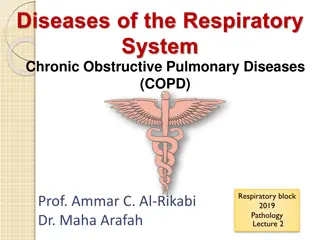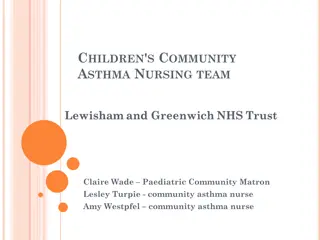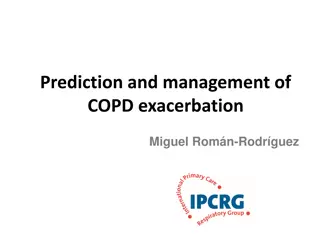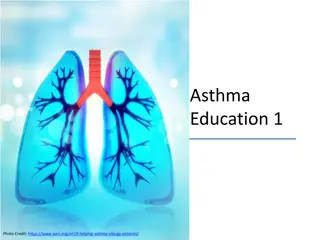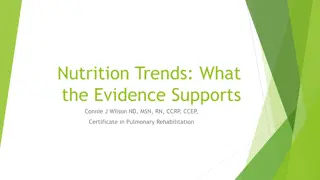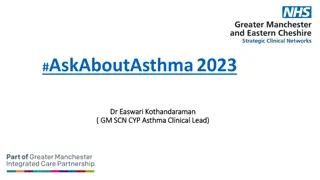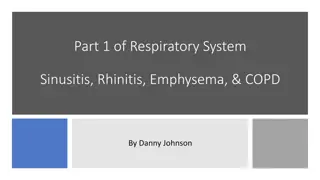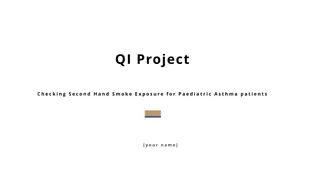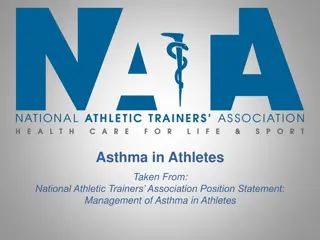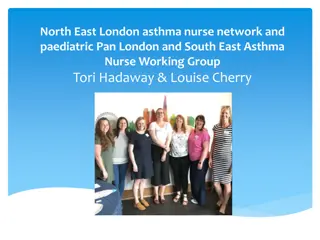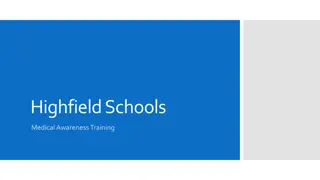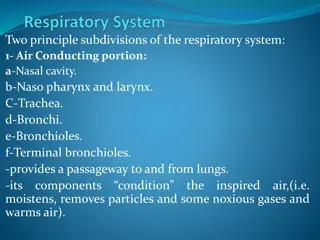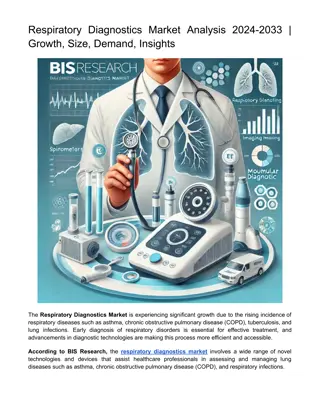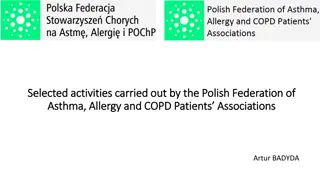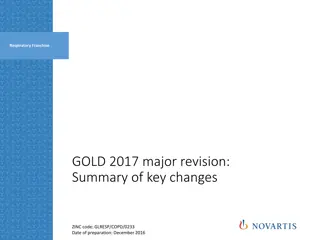Respiratory Case Studies: Asthma, COPD, CF, and CPFE
A 23-year-old pregnant female with uncontrolled asthma, a 70-year-old with severe COPD exacerbation, a 50-year-old man with worsening breathlessness, and a 20-year-old with cystic fibrosis and Burkholderia cenocepacia colonization present challenging respiratory cases. The cases involve considerations for management, treatment options, and potential prognoses.
Download Presentation

Please find below an Image/Link to download the presentation.
The content on the website is provided AS IS for your information and personal use only. It may not be sold, licensed, or shared on other websites without obtaining consent from the author.If you encounter any issues during the download, it is possible that the publisher has removed the file from their server.
You are allowed to download the files provided on this website for personal or commercial use, subject to the condition that they are used lawfully. All files are the property of their respective owners.
The content on the website is provided AS IS for your information and personal use only. It may not be sold, licensed, or shared on other websites without obtaining consent from the author.
E N D
Presentation Transcript
SpR 2 Matt Dickson 4/9/19
Question 1 A 23 year old female who is 30 weeks pregnant has been referred to the respiratory clinic due to uncontrolled asthma . She has a history of atopy and has experienced symptoms of wheeze, cough, and breathlessness of varying severity since the age of 5 years old. Since her late teens, her symptoms have been well managed by her GP with beclomethasone 200mcg BD and salbutamol MDI PRN, however over the past 2 months she has struggled with nocturnal symptoms of cough and chest tightness. She has trialled a LABA in the past to no benefit. With regards to this scenario, which of the following is true? a) Addition of a LAMA could be the next step in management b) Addition of a LTRA could be the next step in management c) Administration of prostaglandin E2 would be contraindicated for induction of labour d) Administration of prostaglandin F2 would be safe for post-partum bleeding e) In pregnancy, approximately half of patients with asthma will experience a worsening of their symptoms
Question 2 A 70 year old gentleman with severe COPD is admitted to the emergency department with a pneumonic exacerbation of COPD. On examination he is drowsy, RR 26/min, HR 140bpm, BP 90/60, O2 Sats 87% on 60% FiO2, Temp 38.4C. He has coarse inspiratory crackles on auscultation of the right lower zone, expiratory wheeze throughout, and oedema to his knees. His ABG on 60% FiO2 is: Ph: 7.15, PaO2 8.0kPa, PaCO2 8.0kPa, HCO3 29mmol/L With regards to this scenario, which of the following is true? a) A chest radiograph is an absolute requirement prior to NIV use in an emergency b) His hypotension is a contraindication to a trial of NIV c) Levels of hypoxia and emphysematous destruction of the vascular bed correlate well with the pulmonary arterial pressure d) Pneumonia is a contraindication to NIV use and I+V should be used e) The A-a gradient is 42kPa
Question 3 A 50 year old man is referred to the respiratory clinic with a 12 month history of progressively worsening breathlessness and an intractable cough. He is an ex-smoker, with a 30 pack year history. On examination he is clubbed, with fine inspiratory crackles heard in the bases. His pulmonary function tests reveal an FEV1 of 50% predicted, FVC of 90% predicted, TLC of 90% predicted and TLCO of 30% predicted. His HRCT thorax can be seen adjacent: Which of the following statements are true: a) CPFE associated pulmonary hypertension has a better prognosis than COPD-associated pulmonary arterial hypertension b) He can be offered treatment with pirfenidone c) Lung cancer is more prevalent in CPFE than in COPD or IPF alone d) Referral for lung transplantation should not be considered until the TLCO is <20% predicted e) The most likely diagnosis is lymphangioleiomyomatosis
Question 4 A 20 year old female with cystic fibrosis (homozygous F508) presents to clinic with rapidly deteriorating lung function (FEV1 25% predicted) and persistent culture of Burkholderia cenocepacia in her sputum over the past 6 months. Which of the following are true with regards to her future management? a) Burkholderia cenocepacia colonisation is an absolute contraindication to lung transplantation b) Ivacaftor should added to her treatment c) Ivacaftor-Lumacaftor (Orkambi) should be added to her treatment d) She should be referred for consideration of lung transplantation e) She should receive a 3 week course of Piperacillin-Tazobactam
Question 5 You are asked to teach 2ndyear medical students on the anatomy and physiology of the lungs. Which of the following statements is false? a) In health, at high lung volume, the greater part of airway resistance is situated in the small airways b) PEFR is determined mainly by central airways c) The trachea divides into the right and left main bronchi at the level of the sternal angle d) Type I pneumocytes extend to cover most of the internal surface of the alveoli e) Type II pneumocytes secrete surfactant
Question 6 A 64 year old female attends the lung cancer clinic after presenting to her GP with a chronic cough. A chest radiograph revealed a right upper lobe mass, and you request further imaging (see adjacent). From the images seen, what would her TNM classification be? a) T3N2M1C b) T3N3M1B c) T4N1M1C d) T4N2M1C e) T4N3M1C
Question 7 A 64 year old female attends the lung cancer clinic after presenting to her GP with a chronic cough. A chest radiograph revealed a right upper lobe mass, and you request further imaging (see adjacent). Which of the following are false with regards to this patient? a) 92% of lung cancers in the UK are attributable to smoking b) Her cancer stage is IVB c) Lung cancer is the second most common cancer in females and the second most common cancer in males in the UK d) Lung cancer is the third most common cancer in the UK e) The prevalence of EGFR TK mutation is greater in non-smokers
Question 8 A 40 year old male current smoker presented to MAU with right sided pleuritic chest pain, and following a normal chest radiograph, underwent a CTPA as part of his investigations. No pulmonary embolism was demonstrated, and it was felt his symptoms were musculoskeletal in origin. His CTPA revealed a 6.5mm solid left upper lobe nodule with no other evidence of disease. With regards to this patient: a) He should be offered a PET-CT b) He should be offered a repeat CT in 2 months c) If stable on basis of volumetry, he can be discharged at 1 year d) If the nodule is triangular, smooth and 1mm from a fissure, he should be offered CT follow-up at 1 year e) The Brock Model should be used to assess his risk of malignancy
Question 9 A 30 year old asylum seeker from Somalia is offered a BCG vaccine following a negative Tuberculin skin test, having never received a BCG vaccine before. With regards to this patient: a) BCG vaccination could be offered in the context of a positive Tuberculin skin test b) BCG vaccination would be recommended during pregnancy c) BCG vaccination would still be offered if the patient was 40 years old d) The BCG vaccination is a live-attenuated vaccine derived from Mycobacterium fortuitum e) The Tuberculin skin test may be a false negative in the context of concurrent HIV infection
Question 10 A 60 year old morbidly obese HGV driver is referred by his GP to the sleep clinic with excessive daytime somnolence and witnessed heavy snoring and apnoeic episodes. His Epworth Sleepiness Score is 14, and his AHI is 35 per hour. With regards to this patient: a) He does not need to inform the DVLA at present, and could wait until CPAP is initiated before doing so b) He has moderate OSA c) If established on treatment and asymptomatic, he would require at least 6 monthly follow up in order to keep his Group 2 license d) If established on treatment and asymptomatic, he would require at least 12 monthly follow up in order to keep his Group 2 license e) It is the clinician s responsibility to inform the DVLA of the diagnosis in normal circumstances
